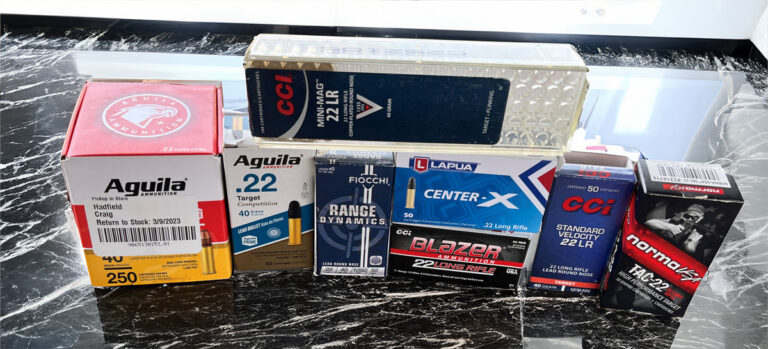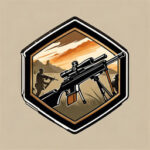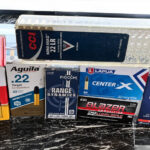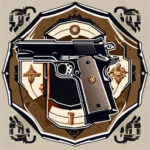In Other News….
Minute of Angle or Milradians for Target Shooting?

When choosing between mils (milliradians) or MOA (minutes of angle) scopes for target shooting, several factors come into play. Both mil and MOA are angular measurements used to adjust the point of impact on a target. Each system has its advantages and considerations, depending on the shooter’s preferences and shooting style.
Mils are a metric angular measurement system commonly used by military and tactical shooters. One mil is equal to 1/1000th of the distance to the target. Mils offer a straightforward and intuitive method for estimating range and making adjustments on the fly. They are often preferred for long-range shooting and tactical applications due to their compatibility with spotting scopes, reticle designs, and mathematical calculations. The mil system also aligns well with metric measurements, which can simplify range estimation and adjustment calculations for international shooters.
On the other hand, MOA is an imperial angular measurement system widely used in the United States and popular among precision shooters and hunters. One MOA is approximately 1.047 inches at 100 yards, making it easier for shooters to make precise adjustments based on the standard measurement of inches. MOA scopes are known for their fine adjustments, particularly for small targets or when shooting at longer distances. Additionally, some shooters find MOA scopes more intuitive, especially those accustomed to imperial measurements.
The choice between mils and MOA scopes often comes down to personal preference, shooting discipline, and familiarity with the measurement system. Some shooters may prefer the simplicity and compatibility of mils for tactical shooting or competition, while others may find the precise adjustments and familiarity of MOA scopes better suited to their shooting style. Ultimately, both systems are capable of achieving accurate results in the hands of a skilled shooter.
It’s essential for shooters to consider factors such as reticle design, adjustment increments, and ease of use when selecting a mil or MOA scope for target shooting. Additionally, shooters should invest time in learning the subtleties of their chosen system and practice using it effectively in various shooting scenarios. By understanding the advantages and considerations of both mils and MOA scopes, shooters can make informed decisions based on their individual preferences and shooting requirements.
– English Bob
.22LR for Training?

A .22LR handgun serves as an invaluable training aid for shooters across different skill levels due to several key attributes. Its minimal recoil makes it particularly suitable for novice shooters who may find larger calibers intimidating. This reduced recoil allows beginners to focus on mastering proper shooting techniques, such as grip, stance, and sight alignment, without the distraction or discomfort of heavy recoil. For more experienced shooters, the .22LR handgun offers an opportunity to refine marksmanship skills and maintain proficiency without the physical strain associated with larger caliber firearms.
Affordability is another significant advantage of the .22LR handgun. Ammunition costs for .22LR cartridges are generally lower compared to other calibers, making extended practice sessions more financially feasible. This affordability enables shooters to invest more time and rounds into training, enhancing their shooting skills and confidence over time. Moreover, the widespread availability of .22LR ammunition ensures shooters can easily procure supplies for their training needs, whether for casual target shooting or more structured skill development.
The accessibility of .22LR handguns and ammunition further enhances their value as training tools. .22LR firearms are widely available at sporting goods stores, gun shops, and online retailers, making them easily accessible to shooters of all backgrounds and experience levels. This accessibility, combined with the relative ease of acquiring ammunition, encourages shooters to engage in regular practice and training activities, ultimately contributing to improved marksmanship and firearm proficiency.
Additionally, .22LR handguns offer reduced noise and muzzle blast compared to larger caliber firearms, making them well-suited for indoor shooting ranges or environments where noise reduction is a consideration. The quieter shooting experience enhances shooter comfort and enjoyment, particularly for those who may be sensitive to loud noises or recoil. Despite its smaller caliber, the .22LR handgun remains an effective tool for developing fundamental shooting skills, such as trigger control, breath control, and follow-through, making it a versatile and valuable asset for shooters seeking to improve their marksmanship abilities
– English Bob
Lee Enfield .303, the first rifle I ever shot.
The first Rifle I ever shot was while I was in the Army Cadet Force in the UK in the 1980’s, the rifle in question was a Lee Enfield .303, most likely a No. 4 Mk I . A Lot of the ones we used were originally Canadian issued WWII surplus.
The Lee-Enfield .303 rifle, born from the merging of James Paris Lee’s bolt-action design and Enfield’s rifling system, emerged as a pivotal firearm in British military history. Initially introduced as the Lee-Metford in 1895, it boasted a ten-round box magazine loaded by charger clips, a groundbreaking feature at the time. Throughout its evolution, the Lee-Enfield proved its mettle during World War I, becoming the standard-issue rifle for British and Commonwealth troops. Its reliability, rapid action, and high magazine capacity rendered it well-suited for the trench warfare conditions of the era.
Continuing its legacy into World War II, the Lee-Enfield remained the primary rifle for British and Commonwealth forces, showcasing its durability and effectiveness in combat yet again. Its role persisted through the post-war era, as it remained in service with various military and police forces globally. Despite being gradually replaced by more modern firearms, the Lee-Enfield’s impact endured, leaving an indelible mark on popular culture through its appearances in films, literature, and historical accounts.
Produced in several variants and manufactured not only in Britain but also in countries like India, Australia, Canada, and the USA, the Lee-Enfield .303 rifle symbolized British military prowess and ingenuity. Its design influenced subsequent firearms development and played a significant role in shaping military tactics and strategies during the late 19th and early 20th centuries. As a reliable and effective infantry rifle, the Lee-Enfield stands as a testament to the endurance and adaptability of British military technology across decades of service.
– English Bob
My First Firearm.
I moved to the US in 2001, becoming a citizen in late 2014. Almost immediately my wife told me I was American now, I should buy a gun! I had shot in the UK, while a member of the Army cadet’s and on the battalion shooting team.
I thought about it on and off for the next couple of years finally deciding in late 2017 it was time. My research led me to decide I would most likely get a Compact handgun, most likely in 9mm. This was due to the cost of ammunition, I wanted to be able to afford to shoot it and didn’t want my first handgun to be a 22.
I went to the indoor range near home and rented 5 9mm Handguns, shooting 10 rounds through each. Those initial rentals were:
Glock 19
S&W M&P Shield 9mm
A CZ (don’t remember which)
Springfield XD9
Beretta PX4
I ended up going back and putting 20-30 rounds through both the XD and the Glock 19, finally deciding the Springfield XD9 was the one I liked and shot the best.
January 2nd, 2018 I ventured into my local Sportsman’s warehouse to find out what I needed to do to buy my first gun. The associate behind the counter told me I’d need 2 forms of ID and a Handgun Safety Certificate (Yay California!). Asking how difficult the test was for the Certificate she looked at me and said “Have you handled a gun, and do you have common sense?” after I answered yes to both, she said the test was easy, and I would get two chances.
I went back that evening after work, and left with my 10-day wait underway on the soon-to-be mine XD9!
– English Bob


